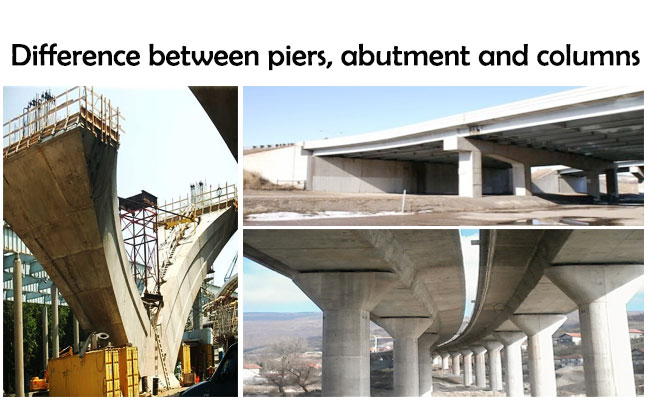Difference between piers, abutment and columns

Piers
Pier means the type of columns for a structure or super structure like an arch or bridge which are erected among two abutments in the bridge to sustain & transmit the loads from superstructure to the foundation. The piers are susceptible to severe axial loads, bi-axial moments and shear forces in transverse and longitudinal direction.
Abutment
An abutment refers to a support structure for bridges that is utilized to disperse the weight and attach it to an embankment. Bridge abutments attach the deck, or surface of the bridge, to the ground and provide support to sustain the weight both horizontally and vertically. On short bridges, one abutment is provided at either end of the bridge and secured to the embankment, sometimes along with a retaining wall.
Longer bridges comprise of supplementary abutments which are arranged along the length, or span, of the bridge to give required support at regular distances. The selection of abutment is based on the obtainable space, geologic features of the bridge site as well as the funding for the project.
Column
The column is a vertical structural element to bear gravity or horizontal loads caused by dead weight of structure or live load of people and transfer the loads, weight or forces from slab and beam to the foundation or footing underneath through compression.
Given below the basic variation among pier and abutment:-
Pier stands for the inner support of the bridge.
Abutments stand for the end supports of the bridge.
The numbers of abutments are restricted to two numbers. But the numbers of piers are in excess of two.
The piers are erected between the abutments.

